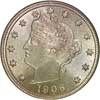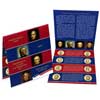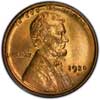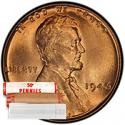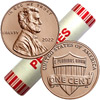The typical 1918(P) nickel is quite flat in the central obverse, the knot which secures the Indian’s braid having no detail at all. The corresponding portion of the reverse is similarly affected, though to a less dramatic extent. The rest of the coin will usually exhibit an adequate to good strike. Shown above is an exceptionally well struck example.
1918(P) nickels exhibit luster than ranges from average to excellent. Coins struck from fresh dies tend to be satiny, while the vast majority of mint state coins are frosty and textured. The planchets used for this issue may display toning streaks from poor mixing of the alloy. The three United States Mints were individually responsible for securing their supplies of nickel blanks, alternately producing them in-house from strip or purchasing them ready-made. This irregularity of supply led to certain date/mint issues having peculiar characteristics such as the lamination’s that plagued the 1921-S nickels.
Varieties:
- One reverse die shows doubling within the Latin legend (FS-016.45). It is easily seen, despite being partially obscured by clash marks.
- A two-feathers variety is also known (FS-1918-401).
| Philadelphia | Denver | San Francisco |
| 32,086,314 | 8,362,000 | 4,882,000 |



